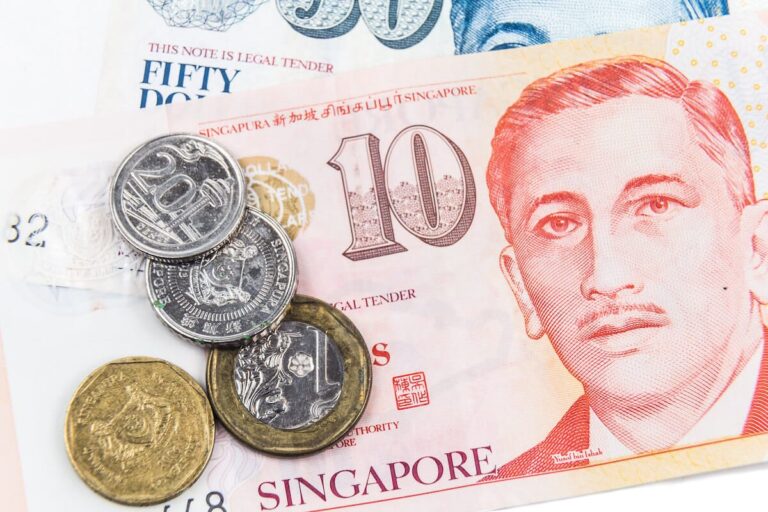The Singapore dollar (SGD) has become one of the world’s most traded and trusted currencies. Known for its stability, the SGD plays a pivotal role in the global financial system and Southeast Asia’s economy.
Whether you’re traveling to Singapore, conducting business, or sending money to friends and family in this island nation, understanding SGD is key to managing your finances effectively. This guide explores the history, features, and exchange rate of Singapore’s currency, as well as tips for handling and exchanging it.
What Is the Singapore Dollar?
The Singapore dollar, abbreviated as SGD, is the official currency of Singapore. It’s also commonly represented by S$ to distinguish it from other dollar currencies, such as the U.S. dollar (USD) or Australian dollar (AUD).
Basic Facts About SGD
- ISO Code: SGD
- Symbol: S$
- Subunit: 1 dollar = 100 cents
- Issued By: The Monetary Authority of Singapore (MAS)
- Denominations:
- Coins: 1, 5, 10, 20, and 50 cents, as well as $1 and $5
- Banknotes: $2, $5, $10, $20, $25, $50, $100, $1,000, and $10,000
Notably, high-value notes like the $1,000 and $10,000 have been gradually phased out to combat money laundering. Meanwhile, polymer banknotes are replacing earlier paper-based notes, offering advanced security and durability.
The History of SGD Currency
The history of the Singapore dollar reflects the region’s economic development and shifts in governance.
Before the SGD
Singapore was a British colony for over a century but never adopted the pound sterling. Instead, it used a mix of currencies, including the Spanish dollar and the Indian rupee. By 1845, the Strait Settlements (including Singapore, Malacca, and Penang) introduced the Straits dollar as the official currency. This currency lasted until 1939, when the British introduced the Malayan dollar, which eventually evolved into the Malaya and British Borneo dollar by 1953.
During World War II, the Japanese occupation brought an abrupt change to currency systems. The Japanese introduced the “military yen,” often referred to as “banana money” due to the printed banana motif on some denominations. This currency collapsed following Japan’s surrender.
The Birth of the Singapore Dollar
When Singapore declared independence in 1965, it initially maintained a currency union with Malaysia and Brunei, using the Malaya and British Borneo dollar. However, Singapore introduced its own dollar in 1967 under the Monetary Authority of Singapore’s supervision. The Singapore dollar was pegged to the British pound, then later to the U.S. dollar, before transitioning to a floating exchange rate system tied to a secretive “basket of currencies.”
Today, the Singapore dollar is widely regarded as one of the most stable and reliable currencies in the world.
5 Unique Facts About the Singapore Dollar
1. Backed by Gold and Assets
Unlike many modern fiat currencies, Singapore dollars are fully backed by gold, silver, and other external reserves. As of 2021, SGD circulation totaled $60.282 billion, underscoring its robust financial backing.
2. Among the World’s Highest Credit-Rated Currencies
Singapore holds an AAA sovereign credit rating, the highest awarded by Fitch Ratings. This ranking reflects Singapore’s strong fiscal policies, low corruption levels, and a sizable foreign reserve. It shares this rating with only a handful of nations globally.
3. Interchangeable with the Brunei Dollar
Due to a continuing currency agreement with Brunei, the Brunei dollar (BND) and SGD are interchangeable at par value. Both currencies are legal tender in each other’s country, showcasing exceptional economic cooperation.
4. Originally Pegged to the U.S. Dollar
Initially, the SGD was pegged to the U.S. dollar at a fixed exchange rate but transitioned to a more flexible system during the 1970s. Today, the Monetary Authority of Singapore closely monitors the SGD within a managed float system tied to a “basket of currencies.”
5. Combating Financial Crimes with High-Value Note Removal
Singapore has gradually discontinued the $1,000 and $10,000 bills, previously some of the world’s highest-value notes, to reduce the risk of money laundering and illicit activities. Despite their phase-out, existing high-value notes remain valid.
Understanding the Singapore Dollar Exchange Rate
The Singapore dollar operates on a managed float, meaning its value is monitored and adjusted to remain stable within a predefined range. This strategy helps support Singapore’s strong international trading partnerships while preventing excessive market volatility.
To understand the SGD’s value, you can use currency converters or track historical trends across various exchange rates. Here are examples of recent exchange rates (values fluctuate):
- 1 SGD to USD = 0.74
- 1 SGD to EUR = 0.68
- 1 SGD to PHP = 41.22
Transparency Tip for Transfers
When sending money internationally using SGD, research reliable platforms like Remitly to secure favorable rates and low transaction fees.
Tips for Handling Singapore Dollars
1. Exchanging Currency
- Avoid Airport Fees: Airport exchanges may offer lower rates and higher fees. Consider exchanging money at reputable city banks or currency exchange hubs.
- ATMs: Widely available in Singapore, ATMs often dispense SGD at competitive exchange rates, though international transaction fees may apply.
2. Declaring Large Amounts
If you’re traveling to Singapore, note that you must declare sums exceeding $20,000 SGD upon entry.
3. Small Denominations are Useful
Carry smaller bills or coins for purchases in food stalls, taxis, and smaller establishments that may not accept high-value notes.
FAQ About the Singapore Dollar
What is the Singapore dollar’s currency code?
The official currency code is SGD, often represented as S$ in international contexts.
Does the Singapore dollar fluctuate in value?
Yes, the SGD operates on a managed float system, so its value fluctuates within a monitored range.
Can Singapore dollars be used in Brunei?
Yes, the SGD is legal tender in Brunei, thanks to a long-standing monetary agreement.
Are high-value SGD notes still valid?
Yes, $1,000 and $10,000 bills remain valid but are no longer printed. They’re being phased out to counter financial crimes.
Is the Singapore dollar a good currency for international trade?
Yes, the SGD’s stability and strong economic backing make it a popular choice for international trade and investment.

